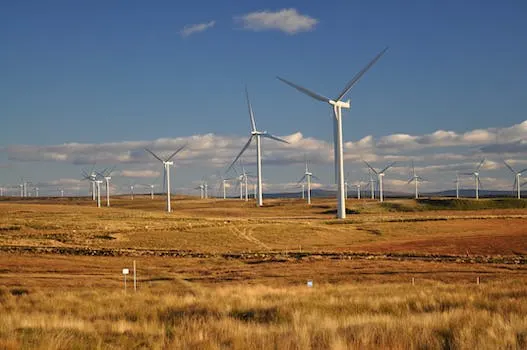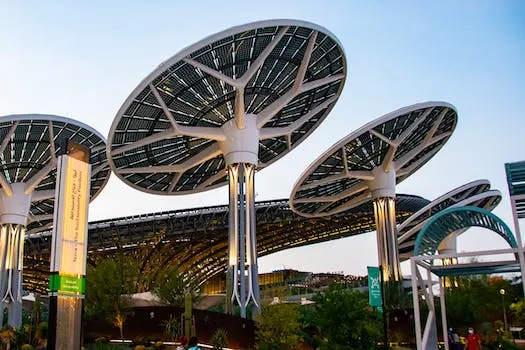
Understanding the Impact of Data Centers on the Environment
data centers are an essential part of the modern digital world, providing the infrastructure necessary for businesses to store and analyze data, as well as for consumers to access information and services. However, these data centers require a great deal of energy to run and generate a substantial amount of waste. In this article, we will explore the different ways that data centers can affect the environment and how their environmental impact can be reduced.
The cloud is nothing more than a set of data centers with shared storage and computing resources. A Data Center is a facility where a company's data is housed by means of connections and resources necessary to optimize its service. Global data centre energy demand by end use has seen rapid improvements in efficiency due to servers, storage devices, and other infrastructure; however this still contributes around 0.3% to overall carbon emissions when taking into account the entire Information & Communications Technology (ICT) ecosystem. It is worth noting that dark data accounts for 54% of worldwide stored information which requires additional power in order to hold it all securely while processing it efficiently.
When people refer to “the cloud” they are really talking about real-world places: buildings that house servers in multiple datacenters across various locations around the world - each one requiring its own power source in order for them all work together seamlessly without interruption or failure. Understanding how these datacenters operate on an environmental level is key if we want reduce their impact on our planet’s health while still being able to enjoy all the benefits they provide us with today’s digital age.
Energy Consumption
Data centers are essential for the modern world, providing access to videos, spreadsheets, and other information to billions of people. However, this comes at a cost: Data centers require a tremendous amount of energy to operate. According to a study by the U.S. Department of Energy, data centers account for 1.8% of total U.S. energy consumption - an amount that is lower than previously estimated but still significant enough to have an impact on the environment if not managed properly.
The type and number of servers used in data centers can have a major effect on their energy consumption; larger numbers of servers require more power and different types may be more or less efficient depending on their hardware specifications and cooling systems in place. In addition, many data centers rely on non-sustainable sources such as coal or natural gas for their electricity needs which can lead to air pollution and water contamination as well as contribute towards global warming due to the release of greenhouse gases into the atmosphere from burning fossil fuels.
Efficiency improvements over time mean that growth in data center usage has decoupled from energy consumption; however clean energy technology must be employed if further growth is expected without increasing environmental damage caused by these facilities’ operations . Conventional air conditioning systems can take up 40% of a data center’s electricity bill while cooling towers which evaporate water instead are much more efficient alternatives that could reduce this figure significantly with minimal disruption or additional costs incurred . Liquid immersion cooling is another option which involves submerging server components into liquid coolants such as mineral oil or fluorocarbons , allowing them to dissipate heat quickly without needing fans or other active cooling methods .
Data center operators must consider all available options when it comes to reducing their environmental impact while still meeting customer demands; investing in clean technologies such as those mentioned above could help reduce emissions associated with running these facilities while also helping them save money in the long run through reduced electricity bills .
Waste Production
Data centers generate a substantial amount of waste, which can come in the form of e-waste such as computers and servers, as well as packaging materials used to ship and store these items. This waste contains toxic chemicals and heavy metals like lead and mercury, which can be harmful to the environment if not disposed of properly. In addition, data centers also generate a large amount of heat that can cause air and water pollution if not managed correctly.
E-waste is becoming an increasingly pressing problem due to its hazardous contents such as lead, cadmium, dioxins, furans, arsenic, mercury, DDT PCBs and more. According to the EPA these substances are dangerous for people animals and the environment alike. To help manage this issue it is important to reuse or recycle equipment whenever possible including IT gear like servers or non-IT related items. Additionally e-waste generated through recycling may contain hazardous materials such as lead mercury cadmium beryllium polluting PVC plastic or other hazardous substances that must be handled with care when disposing of them properly.
Data centers are responsible for processing vast amounts of internet activity but this comes at a cost; they use up huge amounts energy which has an adverse effect on the environment. To reduce their environmental impact data centers should look into ways they can reduce their energy consumption by using renewable sources or implementing energy efficient technologies like virtualization cooling systems etcetera in order to minimize their carbon footprint while still providing reliable services for customers worldwide.
Reducing the Environmental Impact of Data Centers
Data centers can reduce their environmental impact by utilizing energy-efficient hardware and cooling systems. By using more efficient equipment, data centers can reduce their energy consumption and, in turn, lower their contribution to air and water pollution. Additionally, data centers can recycle and reuse waste materials such as e-waste and packaging materials to further reduce their environmental footprint.
Data centers can also switch to renewable energy sources such as solar, wind or hydroelectric power which produce energy without emitting greenhouse gases. Furthermore, carbon offset programs allow data centers to offset their carbon emissions by investing in projects that reduce emissions like planting trees. To further improve the efficiency of a data center’s cooling system, variable speed fans should be used instead of mechanical chillers which could save up to 70% on chilled water costs. Airflow management is another way for data centers to decrease energy consumption by optimizing airflow within the facility.
Solid State Drives (SSDs) are also beneficial for reducing the environmental impact of a data center since they use less power than Hard Disk Drives (HDDs) while requiring less cooling as well. Moreover, naturally cold temperature outside air combined with submersion liquid cooling with AI provide additional benefits such as improved energy efficiency and increased ROI while reducing the overall environmental impact of a data center at the same time.
Conclusion
In conclusion, data centers have a significant impact on the environment, both in terms of energy consumption and waste production. To reduce this environmental impact, data centers should employ more efficient hardware and cooling systems, recycle and reuse waste materials, switch to renewable energy sources, and use DCIM tools to measure the lifecycle of their equipment. Additionally, establishing a circular economy is essential for overcoming growing waste obstacles. data center materials must be circular in nature and not harmful to the environment in order to prolong its longevity. Finally, monitors and sensors can be added to make maintenance predictable which will contribute to equipment health. By taking these steps into consideration when managing data centers we can help protect our environment for future generations.










